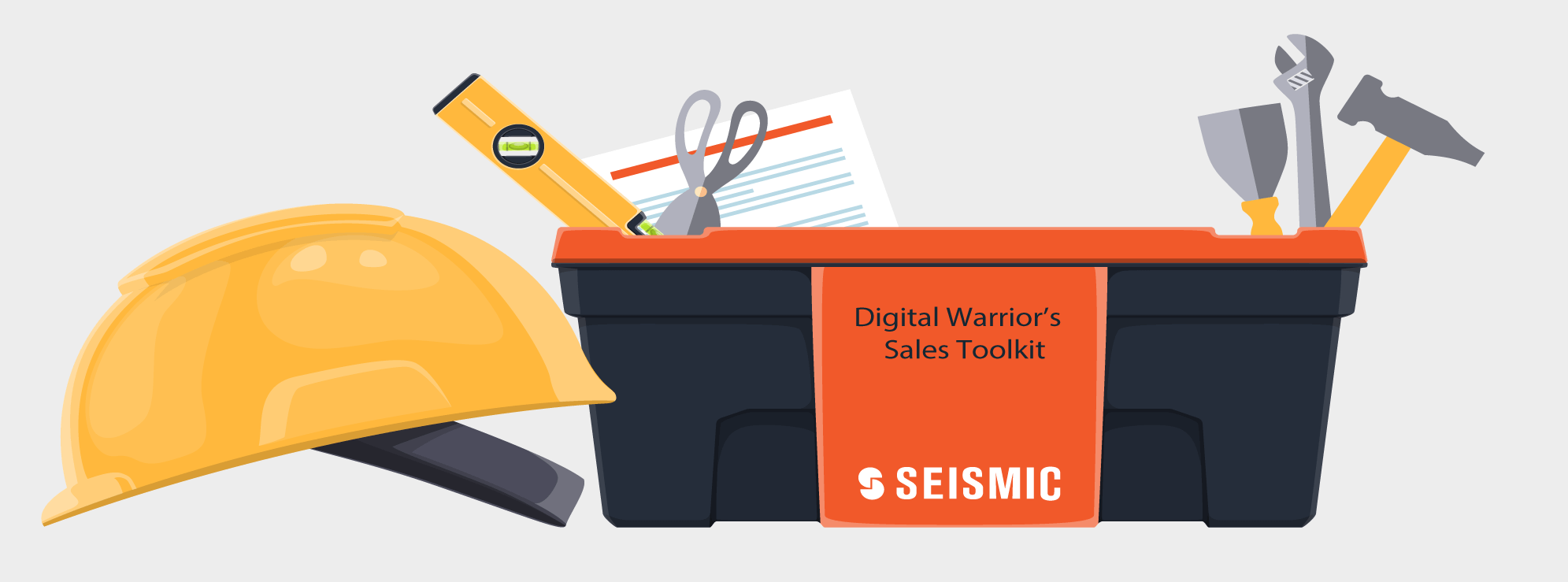As technology evolves and digital interactions on social media become more standard, digital selling is quickly becoming the new normal. Buyers’ expectations of the sales experience are continuously shifting. Prospects are ignoring cold calls. The reason? Social media.
Digital media platforms have become an increasingly popular way of doing business, and social selling is a digital business practice where social media engagement becomes a vital sales tool.
Despite the name, social selling doesn’t focus on selling in the traditional sense. The social selling process focuses more on building a relationship with potential buyers than making an actual transaction.
This quickly-growing business model means that it’s important that sales teams adapt to social selling. This means it’s time to incorporate aspects of traditional marketing and sales with enablement software and advanced social selling techniques. If you’re ready to build a foundation for great social selling, then you should make sure that your sales toolbox includes three key tools.
1. Sales training
Sales training is essential for any sales or marketing job, not only for new hires but also for veteran employees. It’s imperative in the world of social selling, as the media platforms and technology involved are ever-evolving and growing.
Your sales team needs to receive the proper sales enablement training and have the right tools to stay up-to-date on all of it. There are many things that your salespeople need to gain from their sales training. Still, the three primary aspects you need to include in your sales enablement framework are product knowledge, essential sales skills for virtual selling, and sales coaching to improve social selling skills.
Product knowledge
One sales enablement tool that every sales rep can’t function without is product knowledge. No matter how good they are at their job, they can’t make a sale without knowing what they’re selling. Whenever your business is releasing or updating a new product, you need your sellers so they can efficiently answer questions and explain product details to buyers.
Essential sales skills for selling virtually
There are many skills needed for the virtual sales enablement process. Firstly, your sellers need to grab and maintain a potential buyer’s attention. Social media always has a lot going on, making it easy for potential buyers to get distracted so it’s important to teach your sellers the best ways to get and keep prospects’ attention.
Sellers also should exude confidence in their business, the product, and themselves. If a seller seems unsure when responding to a client, the client is more likely to lose interest. After they have gotten a buyer’s attention, they need to have the confidence to build trust and rapport with them. They must communicate clearly and explain the value of the product.
Sales coaching to improve social selling
Regarding sales enablement, marketing is similar online and in-person. The main difference is that there is more for the prospect to be distracted by. With the proper sales enablement tools, sellers will form a relationship with the client before they find a better deal elsewhere. In order to do this as well as possible, sellers should also receive ongoing coaching and feedback so they can continuously improve and hone social selling skills over time.
2. Sales enablement
Simply put, sales enablement is the process through which companies provide sellers with everything they need to make a sale. This process includes providing them with the best sales enablement tools and content—and teaching them how to use them.
Content for the buying process
The first step to proper sales enablement is finding a sales enablement platform that provides sellers with a basic framework of content for the buying process. This way, they’ll have a path to follow and material to leverage when forming rapport with buyers online.
How to create personalized experiences
Sales enablement platforms aren’t all a seller needs to form a bond with a prospect. Every potential buyer is different, so every conversation must be unique. Organizations also have to provide sellers with the tools and skills to improvise when needed.
Insights and analytics
You also need to provide your sales reps with information on your organization’s product or services and encourage them to share insights into the prospect in turn. By sharing this pool of knowledge, sales can go more smoothly, and customers will be more satisfied with the exchange. Additionally, by looking at content analytics, sales teams can see what content is being used when and how buyers are interacting with it.
3. Social platforms
Lastly, you need to find sales enablement software that integrates your organization’s top sales enablement tools and tech stack. For example, tools like LiveSocial provide sellers with everything they need to engage with target markets by tapping into the power of live social media. This gives sellers the opportunity to create a personalized, live feed of marketing, curated, and 3rd-party content for sellers to have easy access to. Sellers are then able to reach their prospects through a simple multi-channel approach. This access, combined with top-notch risk mitigation tools, will help you realize just how much social media can boost your revenue growth.
Is your toolkit equipped for successful social selling?
If not, we have you covered! Lessonly by Seismic features sales training, enablement, and coaching tools that can help sellers embrace and succeed in the virtual sales world. Ready to learn more? Get a demo of our platform to see how sales teams ramp reps quickly, enable them for ongoing success, and scale coaching.
